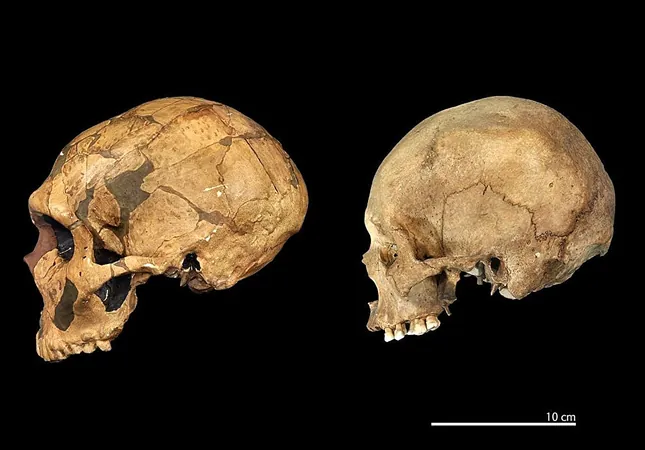
New Study Claims Neanderthals and Modern Humans Must Be Considered Separate Species to Trace Our Origins
2024-12-05
Author: Jacob
Introduction
Research from London's Natural History Museum and the Institute of Philosophy at KU Leuven is sparking new discussions on human evolution. A recent study emphasizes that Neanderthals and modern humans (Homo sapiens) must be classified as separate species to better understand our evolutionary history.
Background
The classification of Neanderthals and modern humans has been a topic of heated debate among researchers. While it is widely accepted that both species stem from a common ancestor, the question remains whether Neanderthals should be deemed a subspecies of Homo sapiens or a distinct species. Leading the charge for the latter view, Chris Stringer from the Natural History Museum and Andra Meneganzin from KU Leuven argue that a variety of evidence—including morphological, ecological, genetic, and temporal data—supports the separation of the two.
Misconceptions in Classification
Meneganzin highlights how misconceptions in taxonomic classification can limit our understanding of speciation. "Implicit and unrealistic theoretical assumptions can hinder progress. The disagreements we see over the classification of Neanderthals and Homo sapiens often stem from oversimplified views of how speciation occurs over time," she explained.
The Gradual Process of Speciation
The study asserts that speciation is a complex, gradual process that unfolded over more than 400,000 years. Throughout this time, although interbreeding occurred, significant differentiation had developed between the two species. By the time Neanderthals went extinct around 40,000 years ago, they were evolving toward reproductive isolation from modern humans.
Challenges in Mapping Evolution
Mapping this lengthy process poses challenges, particularly because the two species continued to mate and share genes as humans expanded out of Africa. However, to understand the evolution of modern humans concretely, it is essential to define distinct categories based on anatomical and ecological traits.
Implications of Interbreeding
The researchers point out that if interbreeding were the sole determinant of species classification, we would have to reconsider the status of many modern mammals and birds. As of now, fossil records indicate that Homo sapiens developed in Africa while Neanderthals evolved in Eurasia. During their cohabitation, they occupied different ecological niches, with Neanderthals better adapted to colder climates.
Physical Characteristics of Neanderthals vs. Homo sapiens
Neanderthals showcased robust physical characteristics, including unique skeletal features that suggest they had larger internal organs, allowing for greater physical exertion in harsh environments. In contrast, Homo sapiens had a more gracile skeleton, which indicates a less energy-intensive lifestyle. This could explain the survival advantages of modern humans, especially in the face of rapid environmental changes.
Conclusion
This pioneering research offers a fresh framework for understanding human evolution. By framing Neanderthals and modern humans as distinct species, scientists aim to unravel the complexities of our origins, moving beyond previous stalemates in the debate. As this field evolves, the implications of this study could reshape our comprehension of both ancient and contemporary human diversity.



 Brasil (PT)
Brasil (PT)
 Canada (EN)
Canada (EN)
 Chile (ES)
Chile (ES)
 Česko (CS)
Česko (CS)
 대한민국 (KO)
대한민국 (KO)
 España (ES)
España (ES)
 France (FR)
France (FR)
 Hong Kong (EN)
Hong Kong (EN)
 Italia (IT)
Italia (IT)
 日本 (JA)
日本 (JA)
 Magyarország (HU)
Magyarország (HU)
 Norge (NO)
Norge (NO)
 Polska (PL)
Polska (PL)
 Schweiz (DE)
Schweiz (DE)
 Singapore (EN)
Singapore (EN)
 Sverige (SV)
Sverige (SV)
 Suomi (FI)
Suomi (FI)
 Türkiye (TR)
Türkiye (TR)
 الإمارات العربية المتحدة (AR)
الإمارات العربية المتحدة (AR)